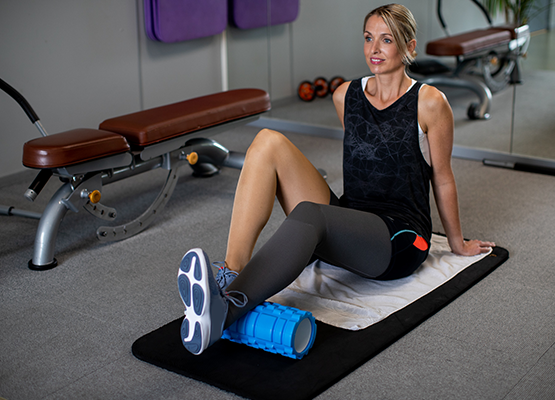

Swelling in your arms or legs can be a sign of lymphedema. A disproportionate increase in adipose tissue in the legs, and sometimes in the arms, can be a sign of lipedema. Although lymphedema and lipedema are different diseases, compression therapy is the key element of their treatment. JOBST® offers a wide range of made-to-measure and ready-to-wear garments, compression bandages and adjustable compression devices (also called compression wraps) for different stages of lymphedema and for lipedema.
In the following sections, we summarize the most important information for a better understanding of lymphedema and lipedema.

Lymphedema is a long-term (chronic) condition where lymphatic fluid collects in the tissues, causing swelling. The swelling may be caused by the absence of lymph vessels, damage, or obstruction of the lymphatic system or because the lymphatic system is overloaded. This leads to swelling of the affected area, such as your arm or leg. The lymphatic system runs throughout your body in parallel to your venous system. It is part of your immune system and helps your body fight against infection. It drains and purifies excess fluids and balances the amount of fluids circulating in your body. It works similar to a waste disposal system, taking excess tissue fluid, bacteria, proteins, and waste products away from the tissues and back into the bloodstream.
Lymphedema often affects only one arm or leg but can also occur in other body parts. Swelling in lymphedema is associated with a feeling of heaviness, tightness or even aching.
Wearing compression during the day is essential to reduce your swelling and maintain your therapy’s success. If left untreated your lymphedema can become worse over time. Depending on your condition, nighttime compression can be necessary as well.
Find more information about the causes, symptoms and treatment of lymphedema here.

Similar to lymphedema, lipedema is also a long-term (chronic) disease that affects predominantly the legs and almost exclusively occurs in women. A buildup of fatty tissue leads to discomfort and pain. The reason why lipedema develops is still unknown. However, it is often associated with phases of significant weight gain and hormonal changes – such as puberty, pregnancy, use of birth control pills and menopause.
Lipedema usually appears symmetrical in shape and size and affects the legs and, sometimes, the arms. The body above the hips and the hands and feet remain unaffected. This often results in shape disproportion – a narrow waist and larger hips and thighs. The affected limbs are often sensitive, painful, or tender.
Compression therapy is also a key element in treating lipedema. Wearing compression garments can lessen pain and discomfort while also supporting the tissue of the affected limbs and improving mobility.
You can find more information about the causes, symptoms and treatment of lipedema here.
Once you are diagnosed with lymphedema or lipedema, your healthcare professional will help you to develop a personalized and holistic treatment plan. This also includes finding a garment that suits your medical and lifestyle needs. JOBST offers garments in different compression classes and styles, as well as adjustable compression devices (also called compression wraps).